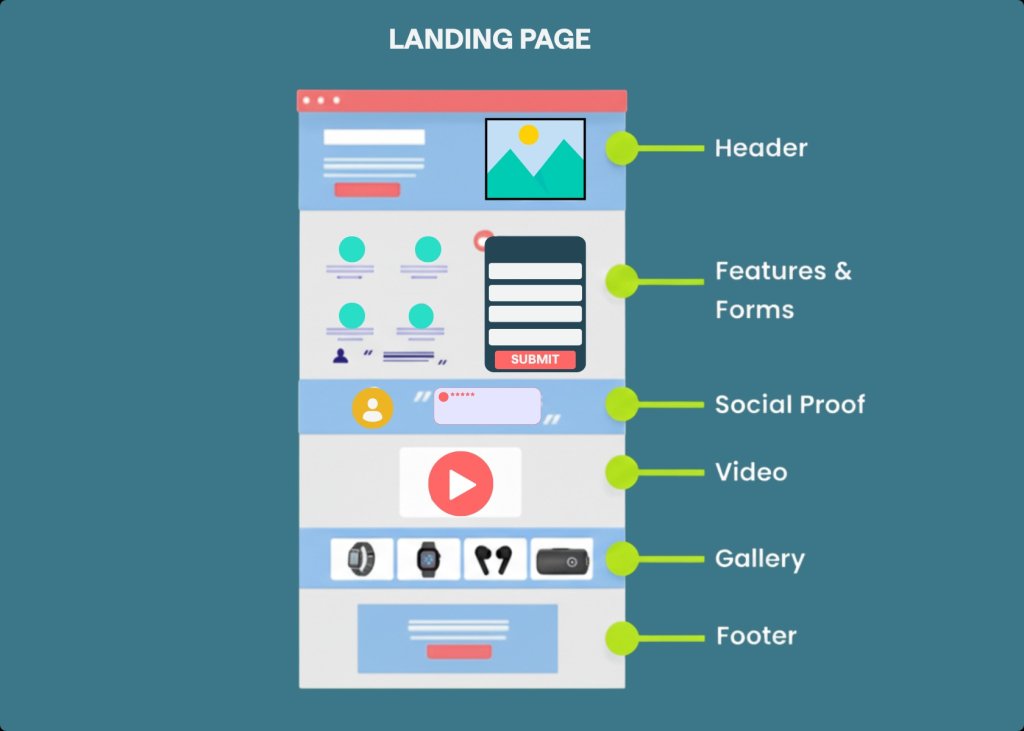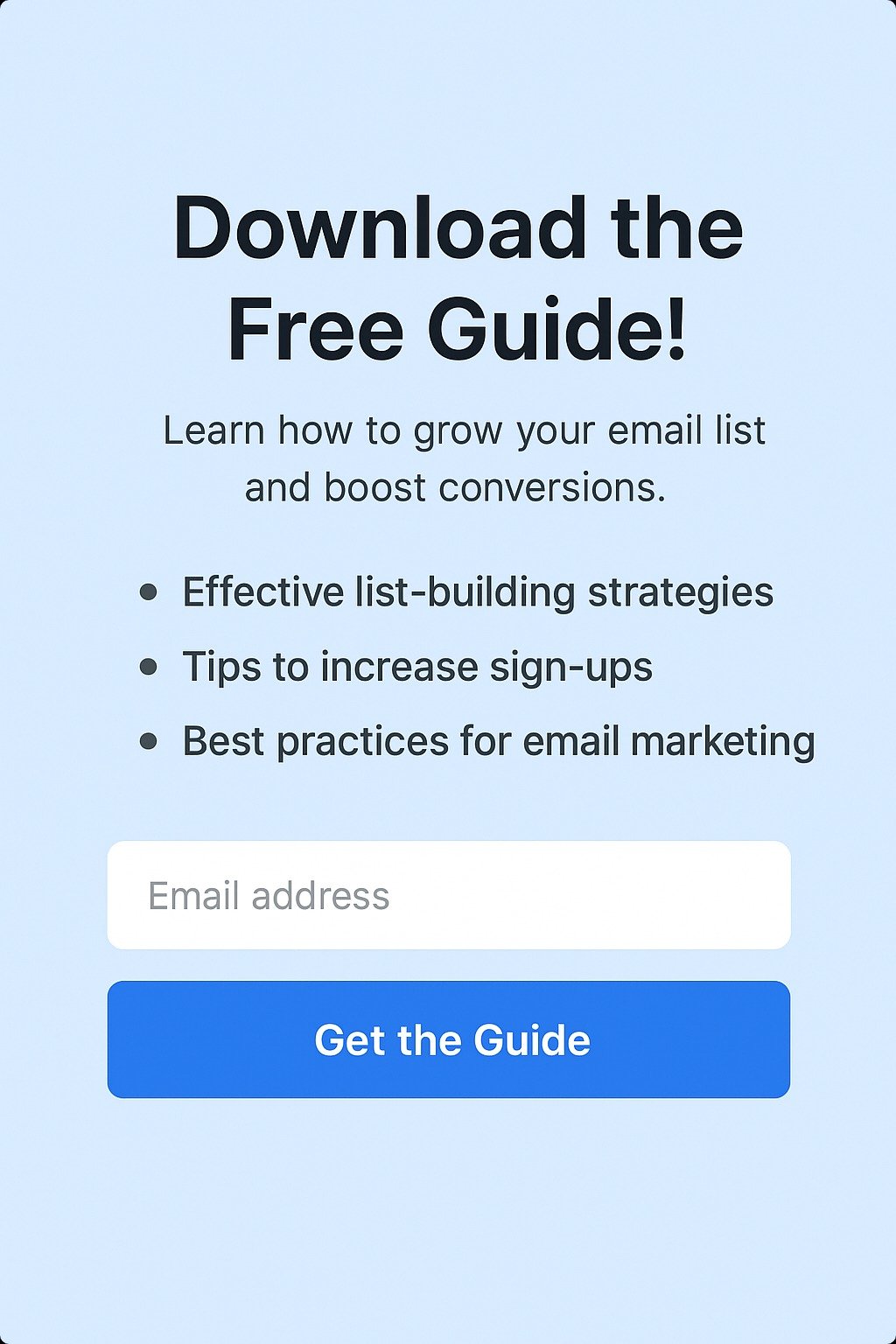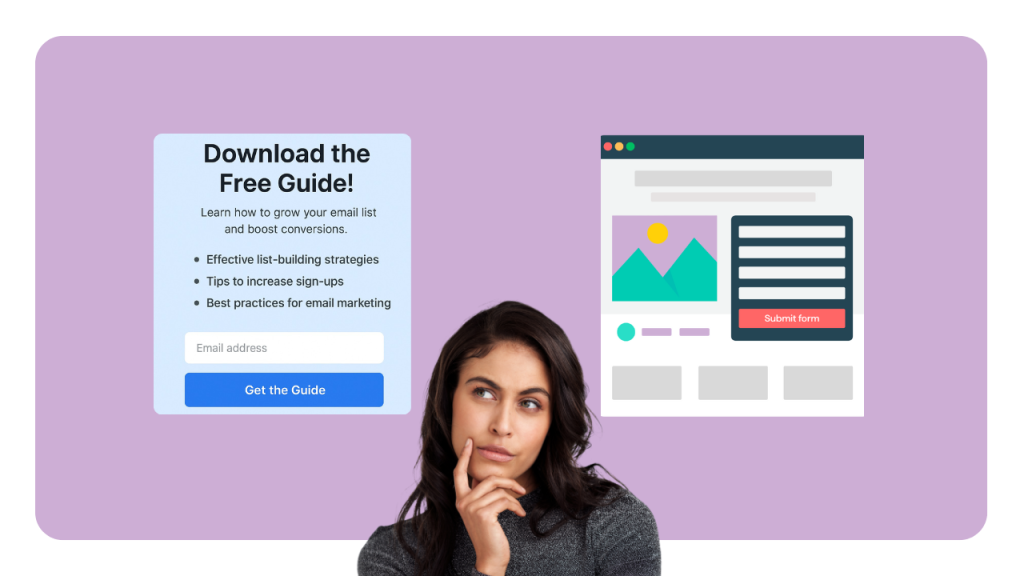Digital marketers often funnel traffic to dedicated pages in order to convert visitors into leads or customers. Two common tools for this are landing pages and squeeze pages, which are similar but not identical.
This outline provides an educational, data-backed comparison of landing pages vs. squeeze pages, defining each, examining their differences in purpose, structure, conversion goals, SEO impact, design elements, and more. It also includes real examples and when to use each type.
What is a Landing Page?
A landing page is a standalone web page created for a marketing campaign, designed with one specific conversion goal in mind. It’s where a visitor “lands” after clicking a promotional link (for example, in an ad, email, or social post). Unlike a full website page, a landing page is laser-focused on a single offer or next step:
Singular Purpose: Everything on the page aims to drive one primary call-to-action (CTA), such as making a purchase, signing up for a trial, downloading an app, etc.
No External Distractions: Effective landing pages typically eliminate site navigation and extraneous links. (In one case study, removing the navigation menu doubled conversions from 3% to 6% by keeping visitors focused on the CTA.)
Detailed Content & Persuasion: Landing pages often provide more information than a squeeze page, they might include multiple sections with persuasive copy, images or videos, benefit lists, testimonials, or FAQs to educate the visitor and build trust before the ask.
Examples: A product launch page with feature details and a “Buy Now” button, a webinar signup page with agenda and speaker info plus a registration form, or a campaign page offering a free trial of a service. Landing pages can even serve as click-through pages leading to another step (e.g. an e-commerce checkout).

What is a Squeeze Page?
A squeeze page is a specific type of landing page with one narrow goal: to capture the visitor’s email address (and sometimes name) for list-building. It “squeezes” information out of the visitor by offering something of value in return. Key characteristics include:
Single Goal, Email Opt-In: The only action a visitor can take is entering their contact info to get the offer. Squeeze pages do not attempt to sell a product or divert to other content, they focus 100% on growing your email list.
Minimal Content: Squeeze pages are typically very short and concise. In fact, most have only four essential elements: 1) a compelling headline, 2) a brief description of the offer or lead magnet, 3) a simple opt-in form, and 4) a clear CTA button to submit the form. There’s usually no long-form text, and often just a single section visible above the fold.
Few or No Links: To avoid distractions, squeeze pages contain as few hyperlinks as possible (often none besides the form/CTA). The user shouldn’t be able to navigate elsewhere; their choice is either sign up or leave.
Lead Magnet Offer: To entice sign-ups, marketers provide a free incentive. Common examples include a downloadable e-book or PDF guide, a free email course, a coupon code, access to a webinar or tool, etc. The offer is prominently featured as the reason to give an email.
Example: A simple page saying “Download our Free 10-Page Marketing Plan Template” with a few bullet points of what’s inside, an image of the PDF, and a form that says “Enter your name and email to get the free template.” The visitor gets the promised resource via email, and the business gains a new lead. (Many newsletter subscription pages and popup email captures are squeeze pages by design.)

Landing Page Vs. Squeeze Page: Key Differences
While a squeeze page is technically a subset of the landing page, there are important differences in how each is used. Below are the major dimensions on which landing pages and squeeze pages differ:
Purpose & Primary Goal
Landing Pages:
Support multiple conversion goals across funnel stages, from lead generation to direct sales. According to HubSpot, 43.6% of marketers use landing pages for lead generation, 33.7% for customer acquisition, and 9.9% for email sign-ups. They’re versatile tools for purchases, event signups, or app installs.Squeeze Pages:
Have a single purpose, capturing contact info (usually emails). Ideal for newsletter signups or lead magnets where success is measured by opt-in rate. With email marketing averaging a $36–$42 ROI per $1 spent, squeeze pages are perfect for growing email lists.
Page Length & Content
Landing Pages:
Usually longer, offering value propositions, features, testimonials, videos, and FAQs, helping users make informed decisions. They educate visitors about a product or service before a CTA.Squeeze Pages:
Extremely short, often just a headline, short text, and a form above the fold. No scrolling required. If visitors already know your brand, “there’s no need to build trust on the page itself.”
Design & Structure
Landing Pages:
Feature-rich and sectioned layouts like media, testimonials, trust badges, etc. About 38.6% of marketers say adding videos boosts landing page conversions.Squeeze Pages:
Minimalist by design, one image, short copy, and a single opt-in form. No navigation, no distractions. Removing navigation can double sign-ups (from 3% to 6%).
Forms & CTA
Landing Pages:
Forms vary by goal, from short lead forms (name, email) to multi-step checkout flows. 50% of marketers use lead magnets on landing pages. Pages with one clear CTA convert at 13.5% on average.Squeeze Pages:
Ask only for an email (sometimes a name). Simplicity boosts conversions, good pages achieve 20–30%, often higher for warm audiences.
Traffic Sources & SEO
Landing Pages:
Get traffic from SEO, PPC, and social media. 35.6% of marketers use SEO to drive traffic. Optimized landing pages can rank well but focus more on conversions than long-form content.Squeeze Pages:
Rely on ads, email, or social media traffic, not SEO. Minimal content makes ranking difficult. They’re often pop-ups or hidden campaign pages designed for conversions, not discovery.
Page Format
Landing Pages:
Standalone campaign pages. Businesses that increase landing pages from 5 to 40 see 12x more leads.Squeeze Pages:
Can be standalone or appear as pop-ups or splash pages. However, 95% of users dislike pop-ups and over half view brands using them negatively.
Conversion Performance
Landing Pages:
Average conversion: ~2.35%, with top pages achieving 10–20%+. Focused, single-CTA pages reach 13.5%.Squeeze Pages:
Higher conversions, 20–30% typically, sometimes 50%+ when traffic is well-targeted. The trade-off: simpler goal (email only) but faster lead capture.
Landing Page Vs. Squeeze Page: Comparison Table
Feature | Landing Page | Squeeze Page |
Main Goal | Multiple (sales, sign-ups, downloads) | Single (email capture) |
Average Conversion Rate | 2.35% – 13.5% (top: 20%) | 20% – 30% (can exceed 50%) |
Content Length | Long, detailed, multi-section | Short, minimal, one-screen |
Design | Rich visuals, multiple CTAs | Simple, one CTA, no distractions |
Form Fields | 2–5+ fields (can be multi-step) | 1–2 fields (usually email only) |
Navigation | Sometimes present | None |
Traffic Source | SEO, PPC, email, social | Ads, pop-ups, or email |
SEO Focus | Often optimized for keywords | Not SEO-focused |
Conversion Metric | Purchase, signup, lead | Opt-in rate |
Typical Use | Mid- to bottom-funnel | Top-of-funnel lead capture |
When to Use a Landing Page Vs. a Squeeze Page
Choosing between a landing page and a squeeze page comes down to your marketing goal and the context. Both have ideal use cases. Below, we outline scenarios for when each page type makes the most sense:
When to Use a Landing Page
Use a landing page when your goal goes beyond just collecting an email, for instance, when you need to inform and persuade the visitor to take a specific action. Typical use cases:
Promoting a Product or Service: If you want the visitor to consider buying something or starting a free trial, a landing page is appropriate. You’ll need space to describe what’s being offered. Example: A landing page for a software tool might include features, screenshots, pricing plans, and a “Start Free Trial” button. The visitor can read details before converting, which is crucial for sales-focused campaigns.
Complex or High-Commitment Offers: When the conversion ask is significant (like scheduling a demo call, filling a multi-field form for a quote, or making a purchase), a landing page gives you room to build trust. You might include testimonials, case studies, or an explainer video to address objections. Squeeze pages don’t provide this depth. In short, if the user needs education or convincing, choose a landing page.
Multiple-Step Funnels: Landing pages work well as part of a funnel. For example, you might run ads to a landing page that collects a lead (like a mini form for “contact sales”), and on the thank-you page upsell a small product. Or vice versa, use a squeeze page first, then send leads to a longer landing page (this is a hybrid approach some marketers use. If you have sequential offers or want to qualify leads, a landing page gives flexibility (you can include checkboxes, additional info fields, etc. to segment the lead).
Content Marketing & SEO: If you’re creating a resource to draw in organic traffic (e.g. a long-form guide or a pillar page that has a conversion element on it), that’s effectively a landing page as well. It serves both to inform and to convert. A squeeze page would not rank or serve as a content piece in the same way. So for any SEO-focused campaigns or educational content downloads, a landing page is the way to go, you might write a blog-post-like landing page that ends with a lead capture form.
Create your landing pages
Start with a customizable template
Whitepaper Download Template
B2B Lead Magnet Template
B2B Product Finder Template
When to Use a Squeeze Page
Use a squeeze page when your primary goal is to grow your email list or initial leads, and you want to maximize the number of sign-ups with minimal barriers. Ideal scenarios for a squeeze page include:
Offering a Lead Magnet: If you have a valuable piece of content or perk that you can give away, and your goal is to get as many people as possible to opt in for it, a squeeze page is perfect. For example: “Free SEO Checklist PDF”, the squeeze page would be very direct: “Grab our 10-step SEO Checklist (PDF) by entering your email.” Because the offer is self-explanatory and instantly useful, a long page isn’t needed.
Newsletter or Community Sign-ups: When you’re primarily looking to get subscribers for a newsletter, daily tips email, or an online community, a squeeze page does the job. Often, newsletters use squeeze pages that highlight a few bullet benefits of joining (“Get weekly insights, be the first to know news, etc.”) and a simple email box. Since the “product” is the newsletter itself (which might not need much explaining especially if it’s tied to a known brand or persona), a short squeeze page converts best. Many personal brands or bloggers have homepage takeovers that act as squeeze pages for their newsletter.
Pre-Launch Waiting Lists: If you’re launching something new (app, course, product) and just want to collect interested users’ emails to notify them, a squeeze page is ideal. You might tease the upcoming product and have a “Join the waitlist” email form. The full details can come later via email or on a landing page once the product is ready – but to build that early list quickly, keep the page super concise.
Paid Ad Traffic for Lead Gen: As a strategy, marketers sometimes drive cold paid traffic (from Facebook Ads, Google Ads, etc.) not to a sales page, but to a squeeze page that offers a freebie. The reasoning is that it’s easier to get an email than a purchase from cold traffic. Once the user is on your list, you can nurture them through emails or send them to a more detailed landing page.
Mobile Traffic Capture: On mobile especially, lengthy pages can deter users. A squeeze page’s simplicity often performs well for mobile visitors coming from social media, for example. If a significant chunk of your audience is on mobile and you want to capture them early, a squeeze page with a quick tap-to-submit (possibly integrating with email apps) can be very effective.
Final Words
Landing and squeeze pages both drive conversions but serve different goals.
The best marketing funnels use both: start with a squeeze page to collect leads, then guide them to a detailed landing page or follow-up email for the next step.
Your choice depends on intent, use a squeeze page for quick list-building, and a landing page for deeper engagement or sales.
For easier execution, landing page builders like involve.me let you build and personalize landing pages using an AI Agent, drag-and-drop templates, forms, quizzes, and calculators. This helps marketers launch optimized, mobile-friendly pages quickly, so you can focus on your message and maximize conversions.
Create a landing page in minutes
No coding, no hassle, just better conversions.








